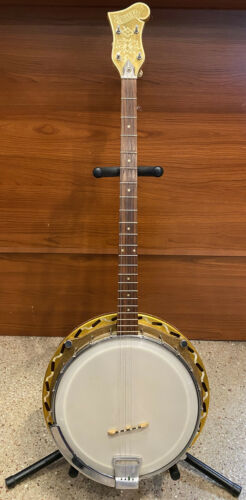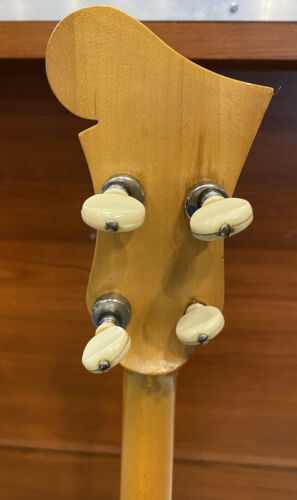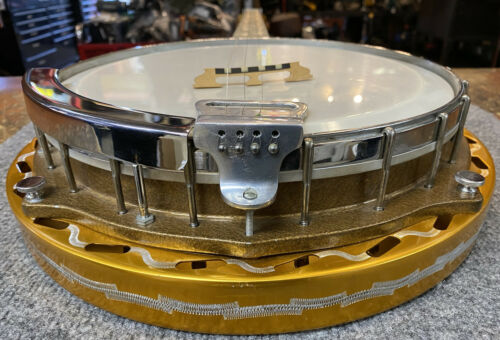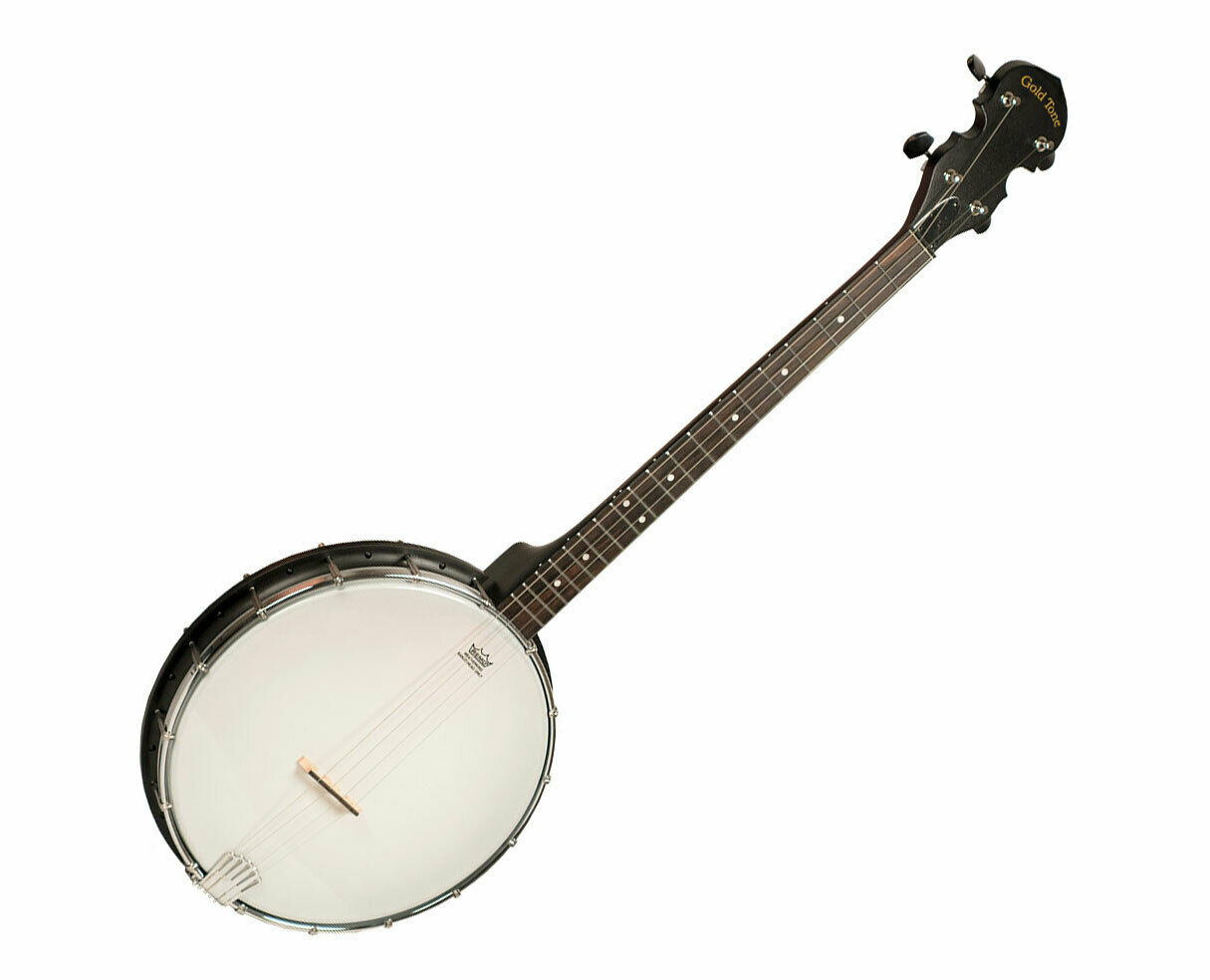-40%
1968 DOPERA ORIGINAL PLECTRUM BANJO / PRE-OWNED
$ 1847.97
- Description
- Size Guide
Description
1968 DOPERA ORIGINAL PLECTRUM BANJOPRE-OWNED, NICE OVERALL CONDITION
PLEASE VIEW PHOTOS
INCLUDES CASE (CASE SLIGHTLY DAMAGED)
To explain this banjo's origins, we have to go back to the first instruments created by the Dopyera brothers. Even before the first resonator guitars, John and Rudy Dopyera built National-brand banjos for a few years in the mid '20s. These had features which previewed the guitars to come: engraved metal resonators, with 3-dimensional flares for stiffness, some with shield-shaped decorations.
40 years later, they tried again. For a brief time around 1968, John and Rudy resurrected their banjos under the "Dopera Original" brand (some just say "Dopera"). The apparent misspelling was an attempt to Americanize the name by dropping the "y". They built tenor, plectrum, 5-string and 6-string "banjitar" banjos, all with similar features: cast aluminum pots, engraved aluminum resonators, and lopsided headstocks with a hint of a mandolin scroll. All were decorated with enough engraving to compete with the most ornate National guitars, and most resonators were anodized in wild colors. Headstocks were finished to match the resonators, and even the tone rings were given subtly matching dye jobs.
Despite all the metal construction, my plectrum isn't any heavier than the average banjo. It has a very warm, even tone, without the metallic clank you'd expect when comparing a National to an all-wood guitar. It has excellent sustain most of the way up the neck, much more so than my tenor. Aside from some minor wear to the low frets, it's very clean all over. It's even possible to make out the
h
and drawn lines
detailing the engraving pattern. The truss rod is doing its job, and this is one of the most playable banjos I've tried. I'm still getting used to plectrum tuning, but I'm starting to see the advantage of close tuning on a long neck - especially with small hands.
Someone on the Banjo Hangout forum said that only around 10 of each kind of banjo was produced. I suspect that's a low estimate, but the
serial number
suggests that it might not be far off. The Dopera brand name was chosen because Semie Moseley owned the Dobro trademark at the time. The banjo-building business quickly shifted to Dopera brand resonator guitars, which eventually morphed into OMI/Dobro, leaving just a few of these wild creations out there.




















